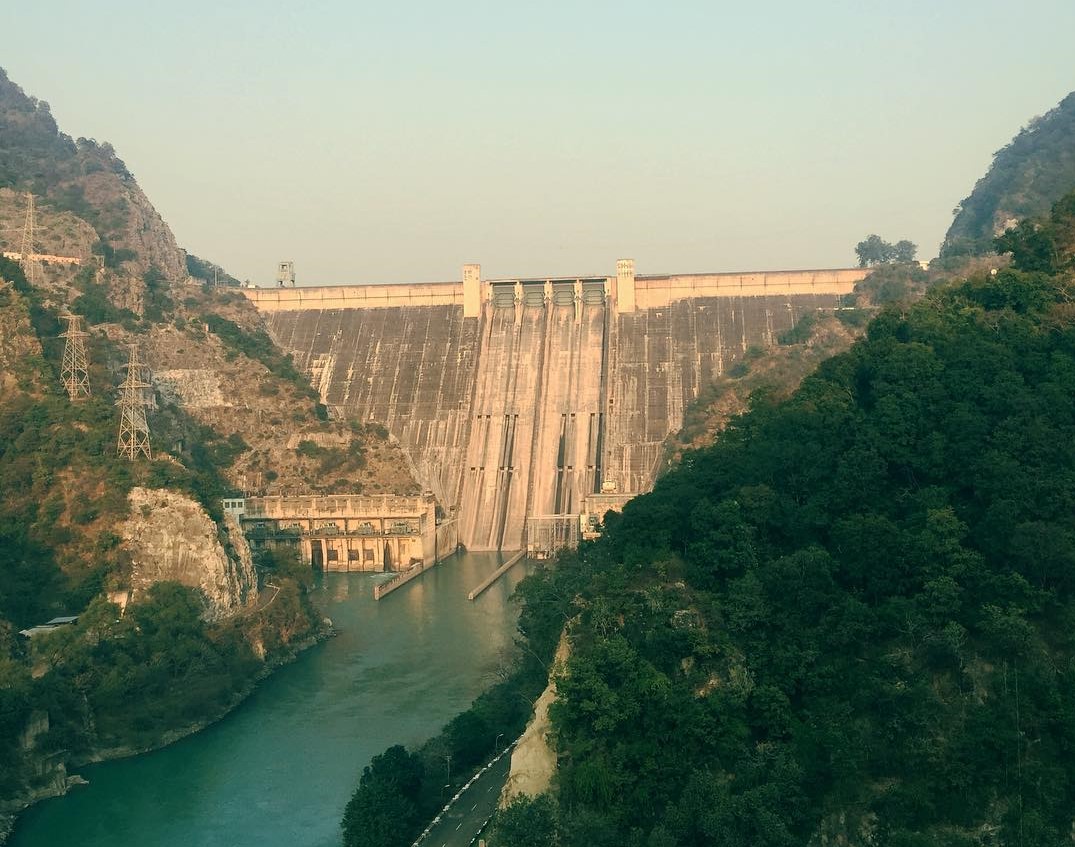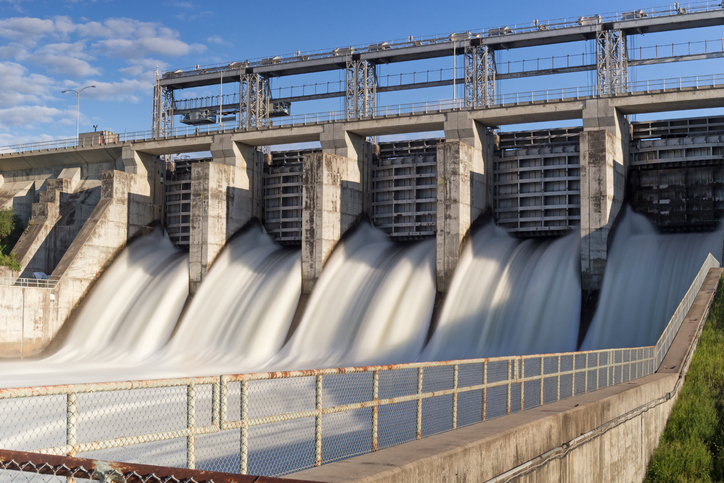The creation of a dam is a big project, depending on the size and location, it can cost hundreds of millions of dollars. It’s not inexpensive to build a dam or even expand an existing one. Since the cost can be so large, I’ll tell you how much it costs to build a dam.
Water transmits energy in the form of waves & oscillations. On account of this unique quality, dams are being used for various applications such as electric and transmission facilities, fishing and navigation. Their applications in irrigation and generation, which account for over 90% of total dams construction, could be the most important use of dams, how much does it cost to maintain a dam, How much does it cost to build a small dam.

How much does it cost to build a dam
The cost of building a large dam is typically measured in billions of dollars. The largest dams in the world include the Three Gorges Dam in China, the Itaipu Dam in Brazil, and the Aswan High Dam in Egypt. These immense structures require an enormous amount of funding and manpower to complete.
The cost of constructing a small dam varies depending on the size and scope of the project. Small dams can be constructed for as little as $1 million or as much as $100 million or more.
How much does a dam cost 2021
The average price tag for constructing a new dam in 2021 was about $4 billion, according to data from Global Water Intelligence Research Institute (GWIRI). This estimate includes all costs associated with building and operating an artificial reservoir, including land acquisition, environmental impact assessments and compensation for displaced residents.
How much does it cost to maintain a dam
The annual maintenance costs for existing dams vary widely depending on factors such as location and size of facility. For example, maintaining one small reservoir in rural Texas may only require around $200,000 annually while another.

How much does it cost to build a large dam
The average large dam is between 10 and 100 feet tall, with some reaching heights of over 200 feet. Large dams are often used for hydroelectric power generation or irrigation purposes. Construction costs are determined by factors such as location (distance from source of water), terrain type and weather conditions at the site.
Maintenance costs include routine inspections as well as emergency repairs when necessary. These costs vary depending on whether you have an earthen or concrete structure, but both can require upkeep every few years depending on how often they are used and how old they are.
The cost of a new dam can vary widely depending on the size and type of structure, but the average is between $15 and $40 million.
The cost of a dam depends on many factors, including the structure’s size, location and purpose. Dams built for flood control or water storage may be significantly larger than those built for irrigation purposes. They also require more advanced engineering techniques and specialized equipment.
The construction costs of large dams can run into hundreds of millions of dollars. For example, China’s Three Gorges Dam was estimated to cost over $75 billion when it was first proposed in 1994. The actual cost was closer to $22 billion by the time construction began in 2003, however, due to lower-than-expected inflation rates and other factors.
The cost of building a dam varies depending on the size, location and type of dam. The larger the dam, the more expensive it will be to build. However, there are some basic costs that you can expect to encounter.
Costs of Building a Dam
The cost of constructing a large dam depends on several factors. These include area and volume, materials used and equipment required. For example:
The size of the construction site – The larger the construction area, the more costly will be the project. If you are building a small dam in your backyard and have access to all the necessary tools, then it may not cost much. But if you have to work on a large construction site with heavy machinery and manpower involved in construction activities then it will cost more money as well as time.
Type of material – There are several types of materials used for making dams such as concrete, clay and earth among others. Each type has its own pros and cons which need to be considered before choosing one over another such as durability or ease of maintenance etc…
A dam is a barrier that stops or restricts the flow of water or underground streams. Dams generally serve the primary purpose of retaining water, while other structures such as floodgates or levees are used to manage or prevent water flow into specific land regions.

How much does it cost to build a small dam
A small dam is typically less than 10 feet in height, and the construction cost will vary based on the size of your project. The average small dam can be built for around $2 per square foot. The cost for a small dam is dependent on several factors including the distance from the nearest source of water, terrain type, and other site-specific variables.
The earliest known dam is the Jawa Dam in Jordan, which may be 12,000 years old. The term “dam” can also be used to describe the physical structure itself. The word “dam” came into English from the Middle Dutch word “damme”, itself derived from Old Norse “dami” which means a “stream”.
There are many types of dams and they are used to serve various purposes.
Here is a list of some types of dams
Hydroelectric dams – used for generating hydroelectricity
Irrigation dams – used for storing and transferring water for use in irrigation systems and agriculture
Small dams – small dams less than 20 meters high that have low hazard potential due to their limited storage capacity or lack of significant downstream effects
The cost of dam maintenance varies greatly depending on the size of the dam, its age and its location. Bigger dams cost more to build and maintain than smaller dams with the same design. The type of dam also has a significant impact on its maintenance costs. A concrete gravity dam is more expensive to construct and maintain than a rockfill embankment dam.
The average cost of maintaining a small concrete gravity dam is $350 per year while the average cost of maintaining a large concrete gravity dam is $2,500 per year. Maintenance includes inspection, cleaning and repair activities.
The average annual maintenance cost for an embankment dam is $1,000 per year while the average annual maintenance cost for a roller compacted concrete (RCC) gravity dam is $250 per year. Maintenance includes inspection, cleaning and repair activities.
The cost of building a large dam depends on its size, location, design and construction materials. The average cost to build a large dam will vary between $10 million and $100 million.

There are several factors that affect the cost of building a large dam such as:
Location – the most expensive place to build a large dam is in the mountains because of the steep terrain and high altitude. The second most expensive location is on an island because it requires more material transportation and labor. The least expensive place to build a large dam is near flat land with easy access to water sources and transportation routes
Design – the type of design used for your project will also affect its final cost. A project with multiple purposes will require more design work than one that only serves one purpose which means higher costs too
Construction materials – choosing low-cost construction materials can significantly reduce your project’s final cost but they may not be as durable as other types
The answer to this question depends on the size and complexity of the dam, as well as local conditions.
Small dams are generally less than 12 feet in height and require minimal maintenance. They may be built with concrete or earthen materials, and they will last for many years if properly maintained.
Large dams can be multi-purpose structures that provide flood control and generate hydroelectric power. These dams are often constructed on large rivers, like the Colorado River in California or the Mississippi River in Louisiana.
The average cost to build a small dam is $10,000 per foot, according to the American Society of Civil Engineers (ASCE). This includes labor and materials for both earth-fill and concrete dams.
The average cost to build a large dam is $1 billion per foot, according to ASCE estimates from 2015.
The cost of building a dam varies greatly depending on the size, location and type of structure. For example, a small earthen dam may cost between $50,000 and $100,000. A large concrete dam can cost anywhere from several hundred million dollars to more than $1 billion.
Costs also depend on whether or not the dam is built on private or public land. The price tag will also vary based on geographical location and the type of dam being built.
Small Dams
The average small earthen dam costs around $50,000 to build, but this price tag does not include maintenance costs after construction is complete. The average annual maintenance cost for small earth dams is about $3,000 per year for each acre of water impounded behind the dam.
The cost of building a dam depends on the type of dam you want. Dams can be constructed out of earth, concrete or stone. The most common type of dam is a gravity dam, which uses the weight of the water to hold back the river. Gravity dams are usually built in flat areas where there is little risk of erosion.
A gravity dam consists of an impermeable core wall that contains pressurized water and an outer shell that prevents it from escaping. Gravity dams are usually built by placing layers of concrete at different heights along the wall until they reach the desired height.
Another type of dam is an embankment or earth fill dam. These are also known as arch dams or arch buttress dams and are generally made from compacted soil or gravel with a clay core. Embankment dams can be constructed anywhere there’s enough material available to build them, even in mountainous areas like Colorado where there aren’t many flat areas suitable for building other types of dams like gravity or arch buttress dams.
